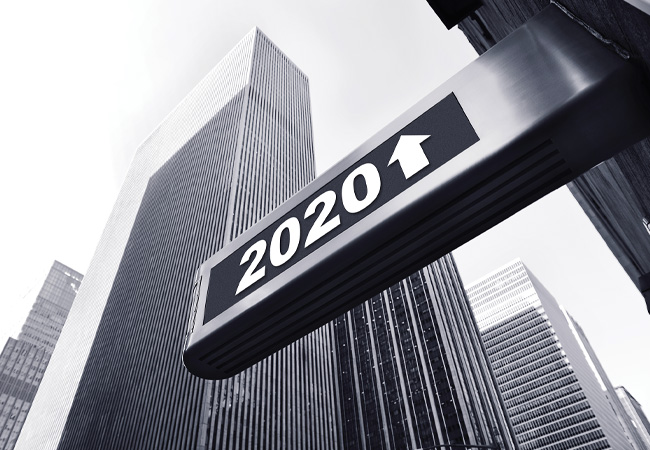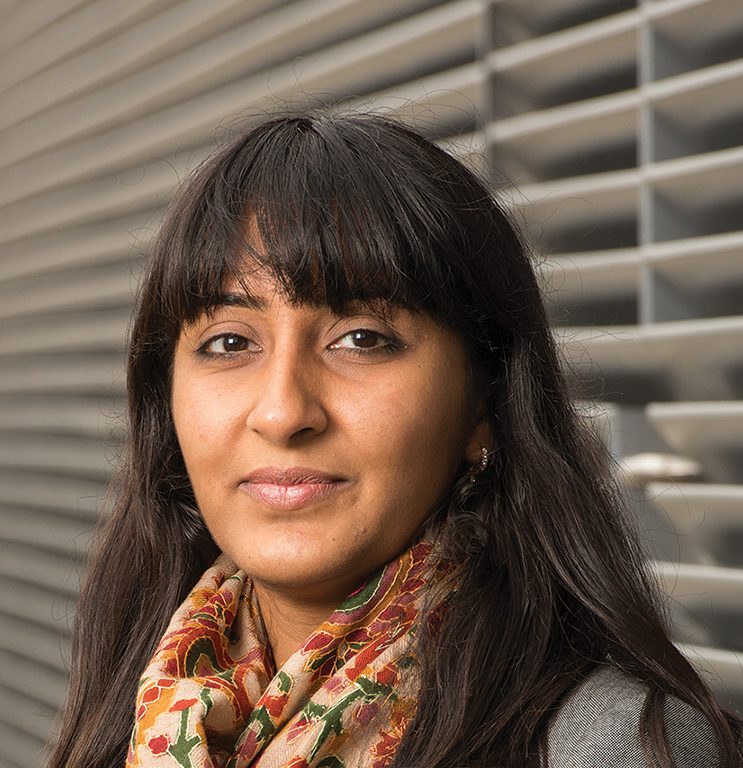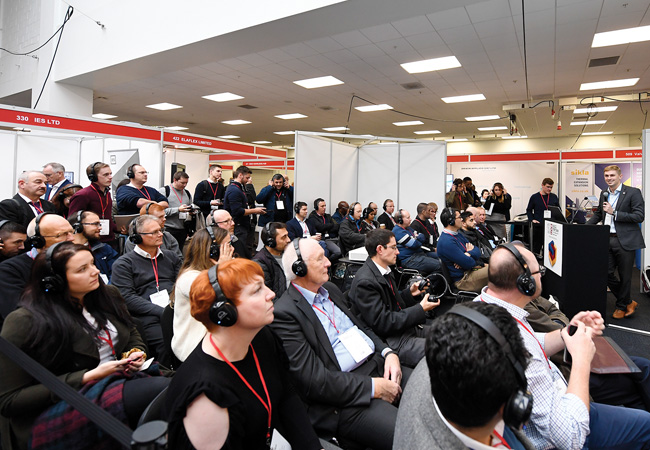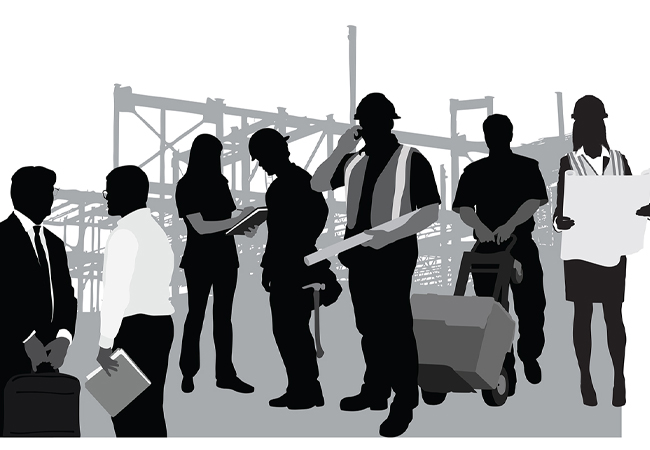
Many industry professionals have committed to achieving government 2050 carbon targets 20 years ahead of time
Jennifer Elias, senior engineer at Cundall, on behalf of LETI

Jennifer Elias, senior engineer at Cundall, on behalf of LETI
It’s been a really exciting year for the London Energy Transformation Initiative (LETI). We published our one-page guide to net-zero operational carbon in 2019 and are gearing up to release our full Climate Emergency Design Guide in January. We’re looking forward to the industry building on, developing, and collaborating on solutions to move towards net-zero carbon in 2020.
To work towards net zero, start by reading our Design Guide. Prepared by professionals from across the industry, it highlights some of the solutions we can put in place now for new buildings. There are many high-impact things we can implement in the buildings we’re designing. We need to:
- Optimise window-to-wall ratio. For residential, this should be 10-30% depending on orientation and, for commercial buildings, 40-50%. Full-height, full-width glass should end with 2010 buildings
- Eliminate onsite fossil-fuel combustion for heating and hot water
- Design all buildings so they are capable of being naturally ventilated when outdoor conditions permit
- Do a full embodied-carbon study, and implement solutions to reduce embodied carbon and construction impacts.
For buildings operating now, we need to:
- Publicly disclose operational energy performance on an annual basis
- Undertake efficiency audits and ensure controls regimes are set, to maximise efficiency
- As plant reaches its end of life, carefully consider alternatives to like-for-like replacement with net zero in mind.
All parts of the industry have a role to play – we’re looking forward to further collaboration on net-zero carbon solutions in 2020.
Dave Cheshire, regional director at Aecom

Dave Cheshire, regional director at Aecom
The past six months have been transformative, with policy-makers, construction clients, designers, local authorities, investors and owners all committing to net-zero targets and declaring climate emergencies. Many of our clients are asking for advice and inviting us to help them translate policy into action. Next year, I’m looking forward to this new enthusiasm being turned into real change.
I’m excited about the launch of the new edition of CIBSE Guide L: Sustainability, as this aims to respond to the rapidly evolving agenda. The Publication Committee that I chair ensured the revision addressed the climate crisis when the rewrite started three years ago, well before the rapid change in public awareness.
An important step in delivering low energy and net-zero carbon buildings is to understand how the buildings we design are actually performing. So, next year, we are starting by pushing our new EVOL+VE initiative, which includes revisiting more of the completed projects we have designed to understand how they are performing, and to learn lessons that we can use to inform our new designs.
I believe we have to take a more holistic view of buildings, to ensure we are considering the whole-life impacts of design decisions, including the circular economy agenda.
This moves beyond simply cutting operational energy use and reducing embodied carbon impacts, towards concepts such as designing for adaptability and designing for disassembly, to ensure we retain the value of buildings, and their components in perpetuity.
Technology helps with the capabilities, now we also need to develop the incentives – Tom Randall
Sara Kassam, head of sustainability development at CIBSE

Sara Kassam, head of sustainability development at CIBSE
I am looking forward to being part of the team refreshing the Engineering Council’s Guidance on sustainability for the engineering profession, published in 2009. Providing guidance for individual engineers and technicians, to support them in meeting their professional obligations, is more important than ever, and is challenging professionals to step up when it comes to sustainability, in all senses of the term. I’m also looking forward to the release of modular CIBSE resources on issues related to net-zero emissions, the reinvigoration of the Controls and IT special interest group and, of course, the Building Performance Awards in February.
To meet zero carbon, we need to do everything: skills, knowledge, training, enthusiasm, collaboration, persistence, creativity and diligence. There must be sustained action in all areas, and everyone has a part to play. It’s heartening to see people and groups coming together via organisations such as LETI and the Building Performance Network (BPN), offering inspiration and challenge. We need to keep going, learning from each other, making a difference in whatever way we can.
Operation of buildings shouldn’t be forgotten; there’s still a huge impact to be made in our existing stock, and focused facilities management (FM) has a key role in the journey to net zero.
Simon Bennett, applications engineer at Adveco

Simon Bennett, applications engineer at Adveco
I am looking forward to the progress reports from hydrogen projects currently being carried out. We believe hydrogen is a key future energy solution – more cost-effective to deploy at scale given the existing gas network, and less impactful on a building’s existing infrastructure. Investment by the Department for Business, Energy and Industrial Strategy is encouraging, as are the results of the test projects, so we see a huge opportunity for green gas and hydrogen technologies in the mid- to long-term. From our investigations into the feasibility of hydrogen, we believe a 20% blend is an achievable first step, and 100% provision feasible as we approach 2050.
As a system designer and manufacturer, we need the government to declare on preferred renewable energy sources, whether this be electric, hydrogen/green/natural gas mixes, or a combination of all. Our priority is to develop a new class of higher-temperature air source heat pumps (ASHPs), which address commercial DHW demands and use more environmentally friendly components.
Our other immediate focus is on delivering packaged and bespoke hybrid systems combining high-efficiency gas and electric water heaters and boilers, alongside solar thermal, micro-CHP and ASHPs. Optimising pre-existing and new systems in this way pays dividends, balancing gas and electricity use for a more cost-effective means of delivering sustainability within the building right now, as well as future-proofing later developments.
Tom Randall, head of building optimisation services at Verco

Tom Randall, head of building optimisation services at Verco
My expectation for 2020 is an acceleration in innovation in building sector processes and contracts to be aligned with building performance, including the path to zero carbon. There has been much coverage of technical innovation – PropTech, CleanTech, Internet of Things, smart buildings and digital twins. For these to deliver the benefits they promise, however, the building sector supply chain must be realigned. Behaviour change results from capabilities plus incentives. The technology helps with the capabilities – now we also need to develop the incentives.
There is emerging leadership in this area. From a new-build perspective, the Better Buildings Partnership’s Design for Performance initiative (see CIBSE Journal, November 2018) requires a contractual, collaborative commitment to operation performance and a process that adds rigour to design, construction and early operation. For existing buildings, LandSec has led the way with an FM contract that explicitly requires delivery of operational performance. In addition, this summer, L&G announced the adoption of an FM integrator approach to join up and deliver the wide energy, maintenance and occupant benefits that many speak about, but few existing FM contracts truly reflect.
In the shadow of climate change, there is a growing focus from landlords and developers on how buildings actually perform. Actual or proposed changes to the Global Real Estate Sustainability Benchmark, Breeam, EPCs, Part L and planning are promoting operation transparency. If that is to be achieved, we need this systemic innovation alongside the technical – and I think it’s coming.
Paul Scriven, divisional director, HDR | Hurley Palmer Flatt
Realisation that we are running out of time in speculating whether climate change is real or not and how it might affect us to ensure a one planet approach. Clients and our marketplace getting on board with revised business plans that demonstrate sustainability as added value while at the same time more focus being put on existing stock. The existing building stock is the majority of our UK’s need for improvement to achieve more energy efficient buildings and processes.
If this drive comes through the consultation of Part L 2020, possible changes in 2025, 2030 and so on. then maybe we stand a chance in becoming significantly more sustainable. For over 30 years professionals in our industry, in part supported by CIBSE, having been striving to engage the sustainable agenda. If only everyone had listened back then, maybe the shift and extent of rapid changes needed over the next 20 to 30 years wouldn’t be such a culture shock or burden on the whole industry and global economy.
There are many dependencies on striving to a zero-carbon future involving a holistic approach and understanding by all parts of our industry, from supply chains to developers, financiers and insurers. Governments down to local authorities, or similar, will need to play a major influencing role in driving this agenda forward to ensure it is a managed and encourage change scenario.
Our focus here at HDR | Hurley Palmer Flatt is to ensure our clients get the full benefit of our global sustainability and engineering experience, knowledge and capability in providing them a focused and achievable route to zero-carbon.






